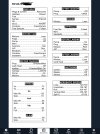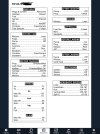Long reply ahead. If you don't want to read I just have two questions:
1. What point exactly in the pattern (or before the pattern) do y'all run through your pre-landing checklist?
2. Do you use a paper checklist, mnemonic, or both for pre-landing?
[edit: found
this PoA thread where many answered these already]
@DCR im late in replying. (1) your 172 is not a glorified go-kart with wings. It'll kill you just as dead as a TBM.
(2). Good on you to ask questions and seek to keep learning.
(3). If you have a fuel injected engine, carb heat doesn't apply to your 172.
(4). If you have a carburetor you apply carb heat, ideally, before reducing power for your descent abeam the numbers. You want the hotter air from operating at higher rpm's to be directed into the carb to eliminate any existing carb ice and keep the temp in there above freezing to avoid carb ice.
(5) on very short final I was taught carb heat off in case of a go-around. You'll have full power available and not be fumbling with the carb heat controls. Just grab throttle and prop (mixture is already forward) and firewall those puppies.
My $0.02. Also - look at the detailed checklist in the POH. Use a checklist in the planes GUMPS is a great memory aid turning base, turning final, short final (simpler is usually easier to recall in my experience).
Good luck!
Thanks for taking my question seriously. For the record I was just trying to appease the peanuts gallery with my "go kart" comment, I have a healthy respect for crashing at 60+ knots in any sized vehicle. I like the idea of carb-heat off on short final; it also seems like a good cue to have "go-around" in the front of your mind. Downside is it requires yet another "step" in the landing checklist at an already very demanding time. At least for a low-time pilot like myself my brain capacity and hand-brain coordination is just about maxed out on short final.
What's the burning red fruit one that keeps getting mentioned?
I believe they are referring to
ATOMATOFLAMES (VFR day equipment requirements). I have to agree with those saying knowing where to find the info is way more important than knowing an acronym for these non-urgent cases. For example - actually reading 14/91.205 reveals that "seat belts" isn't really the full story - a "shoulder harness" is also required in some or all of the seats depending on the date of manufacture.
The only thing not yet mentioned here is turning on the electric fuel pump, for airplanes that have one, it's often used only during takeoff and landing. Consider it part of the "G" in GUMPS.
I have also been lumping "carb heat" into the "G" of gumps. However, my gut tells me this is bad practice and I'm working on a better landing procedure. I heard some use "CGUMPS".
The point of memnomic checklists is short and quick. When the memnonic gets to be close to a page, use a printed checklist.
This brings up another good point - when I'm practicing touch and gos I often struggle to juggle my landing checklist on downwind while also trying to set my speed, trim aircraft, check my heading and position relative to runway, all before reaching the point abeam the numbers where I start to configure for landing.
What point exactly in the pattern (or before the pattern) do y'all run through your pre-landing checklist?
[already said this above - but there is
already a thread which posed these questions.]
While I'm asking -
who uses paper checklist for pre-landing? The current Airman Certification Standards says "In some situations, reading the actual checklist may be impractical or unsafe" (Appendix 6), but doesn't say which situations that is exactly. As far as the regs go I don't think they are required for PPL ASEL; only aircraft for hire, air carriers, fractional ownership and large/multiengine turbine aircraft which require checklist (see
14/135.83,
14/91.503). Let me know if I'm missing a regulation which applies to PPL flying ASEL.


